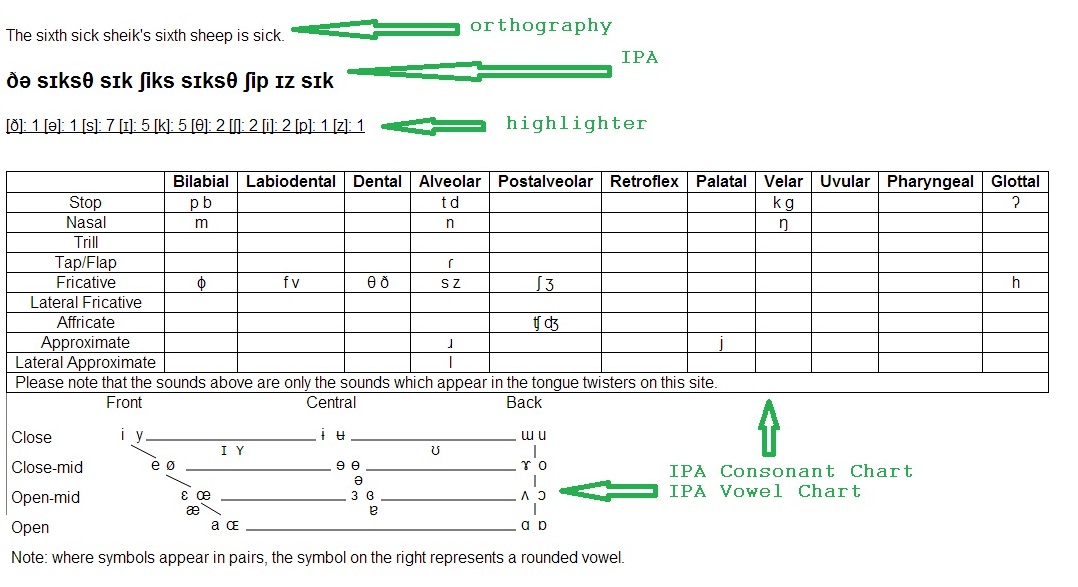Although we hope that you will find the navigational tools of our site intuitive enough, this page will explain the tongue twisters of our corpus and some of the tools we have used to help analyze them.

About the different writing representations (orthographic depictions):
We have chosen to include various orthographic depictions of our tongue twisters for various reasons. First, as with all media that is transcribed from one writing system to another, showing only one written form of a language can limit its resemblance to the actual spoken language, at least to native speakers. It would be weird, for instance, for a native English speaker to see their language written in the Cyrillic alphabet. So, since this site is English-based we include the Romanized transcriptions of a native orthography in addition to the native orthography itself when applicable.
About the Highlighter:
The Highlighter tool allows a user to highlight specific IPA symbols that appear in a tongue twister. Each IPA symbol has its own unique, random color. By highlighting where these symbols appear in the tongue twister in addition to in our IPA chart, we hope that the user will be able to draw some conclusions about the location and proximity of the sounds in the tongue twisters that these symbols represent.
About our IPA chart:
IPA charts typically arrange IPA symbols according to their place of articulation (where in the mouth the sound is produced) and their manner of articulation (how that sound is produced). The places of articulation are organized in the columns while the manners of articulation are in the rows. This way, the location of words in the chart vaguely resembles the place where the sounds are produced in the mouth. If you can imagine the cross-section of a person’s mouth and throat, with their nasal cavity facing left, this may help you understand the logic behind this arrangement. An alveolar consonant, for instance, occurs in a relatively high and frontal part of the mouth, and can be seen in a relatively high, frontal part of the chart. (The vowel chart included with each tongue twister has been arranged with a similar design.) Linguists use many more specific terms to pinpoint exactly where these sounds are formed but for the sake of keeping it simple we are only looking at the general descriptions.
For those of you in the linguistic know: No, this is not the official IPA chart. That chart does not include a row for affricates in the same chart as the other consonants since affricates are basically just two really close consonants. We have included this place of articulation in the same chart in order to add to the visual aid of the chart for users who are less familiar with the IPA.
Now that you know how to use the site, we recommend that you move along to the language selection part of the site.